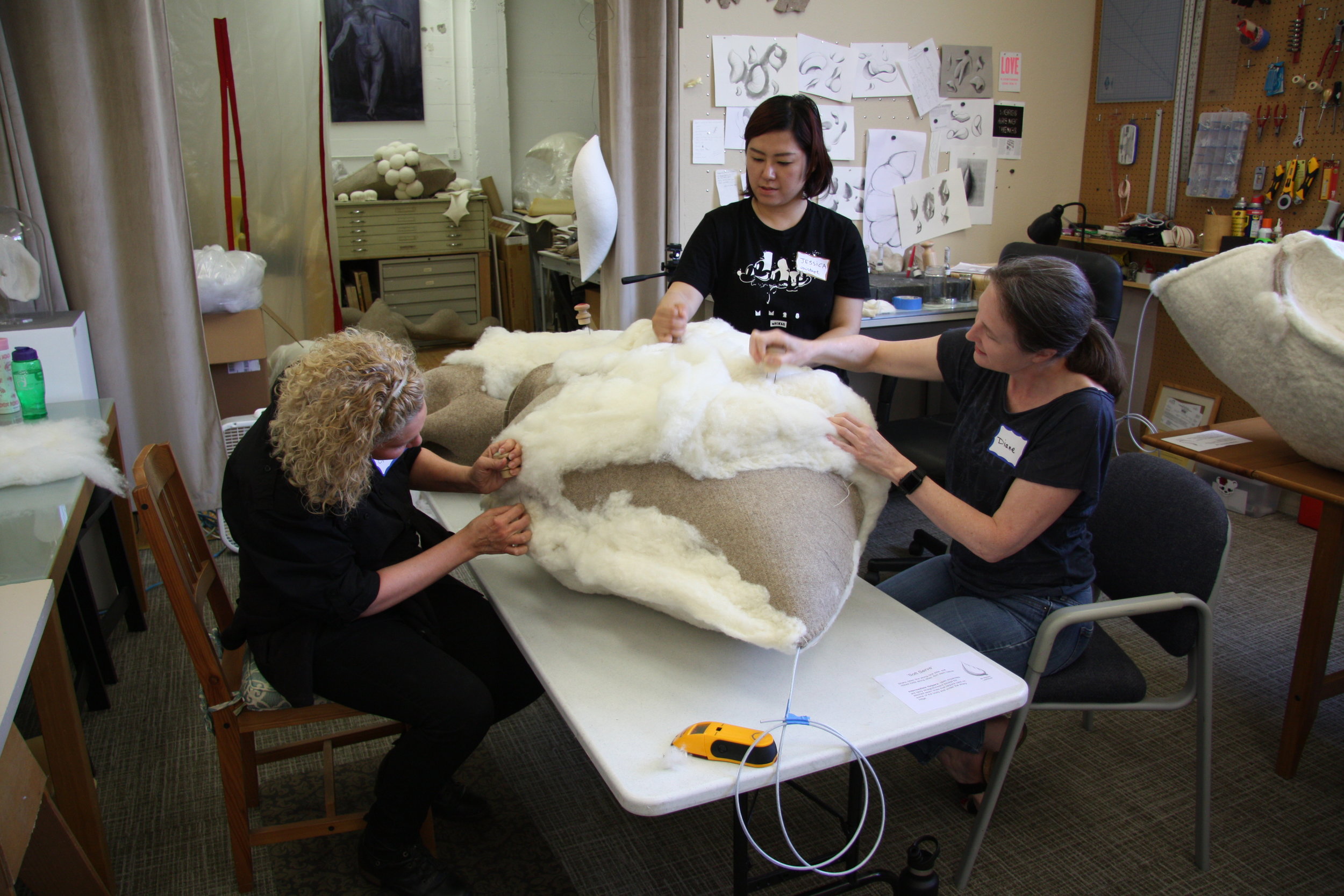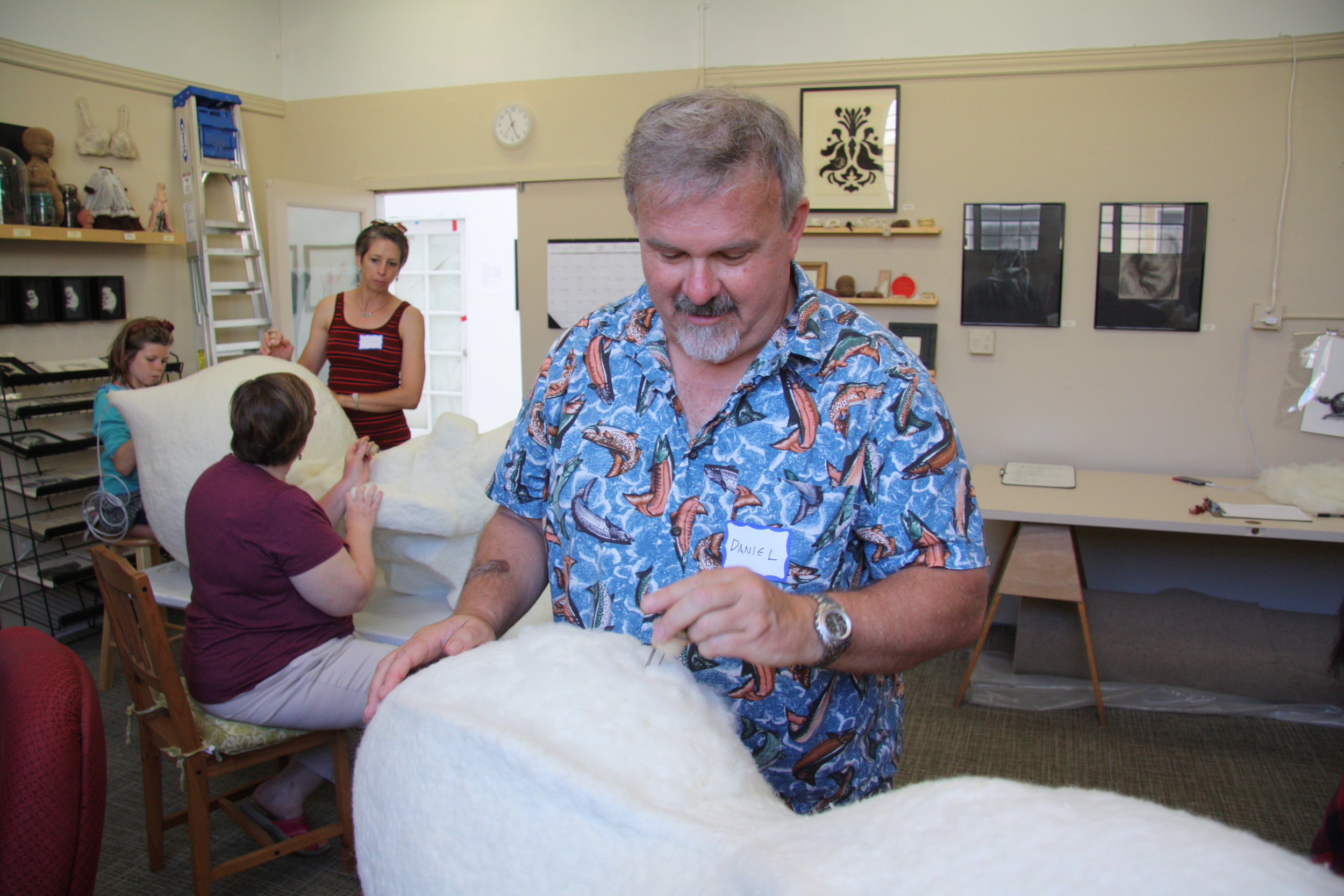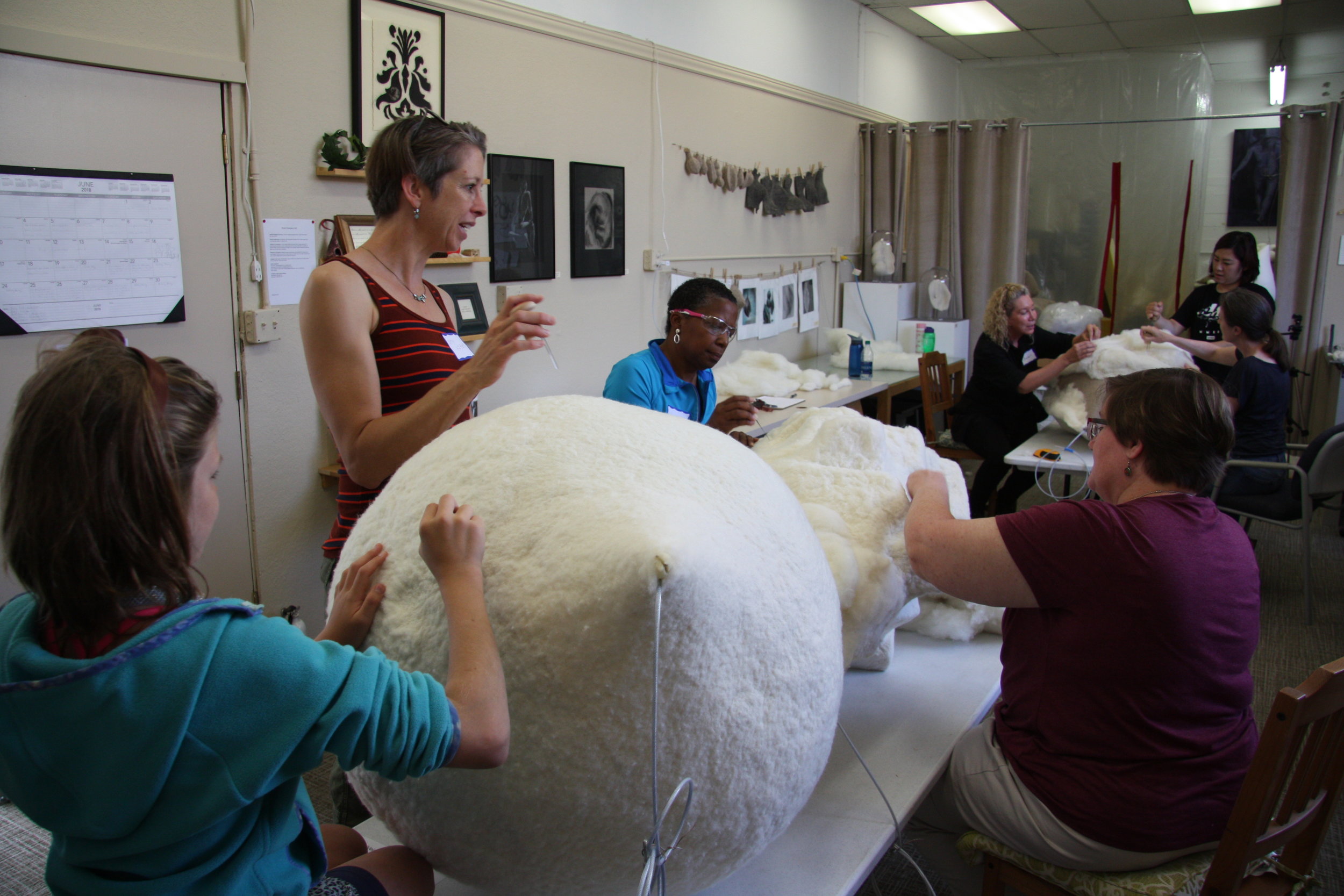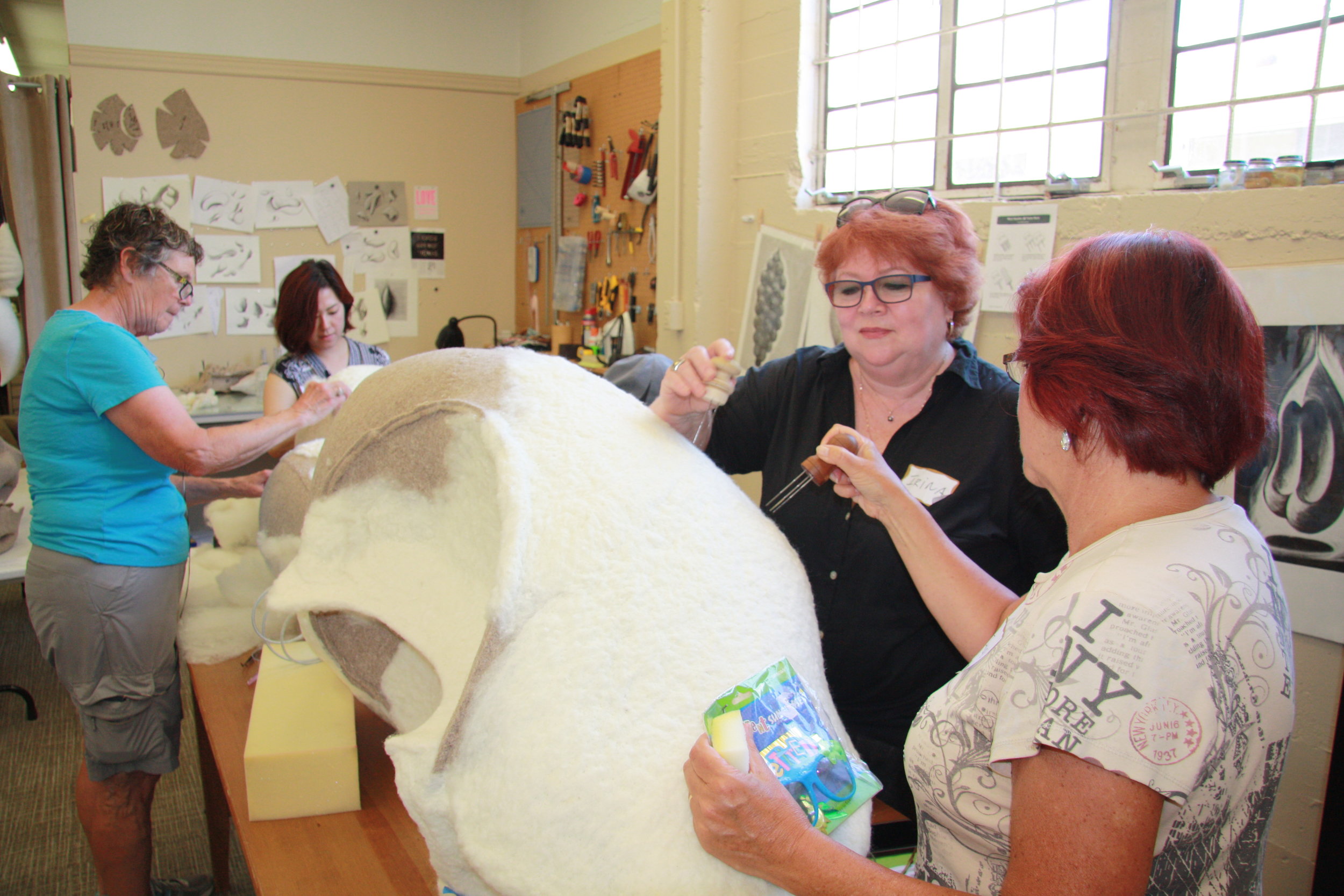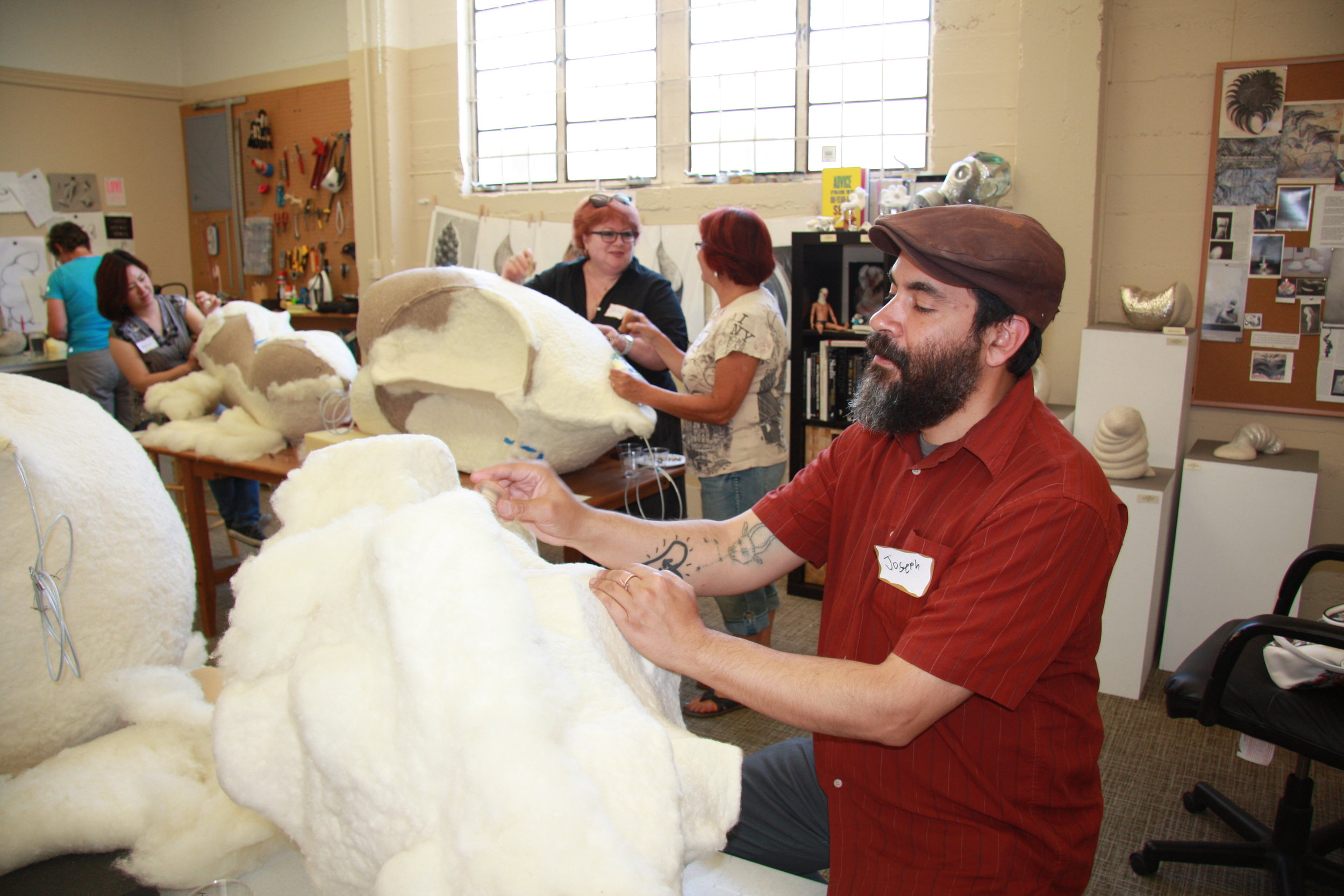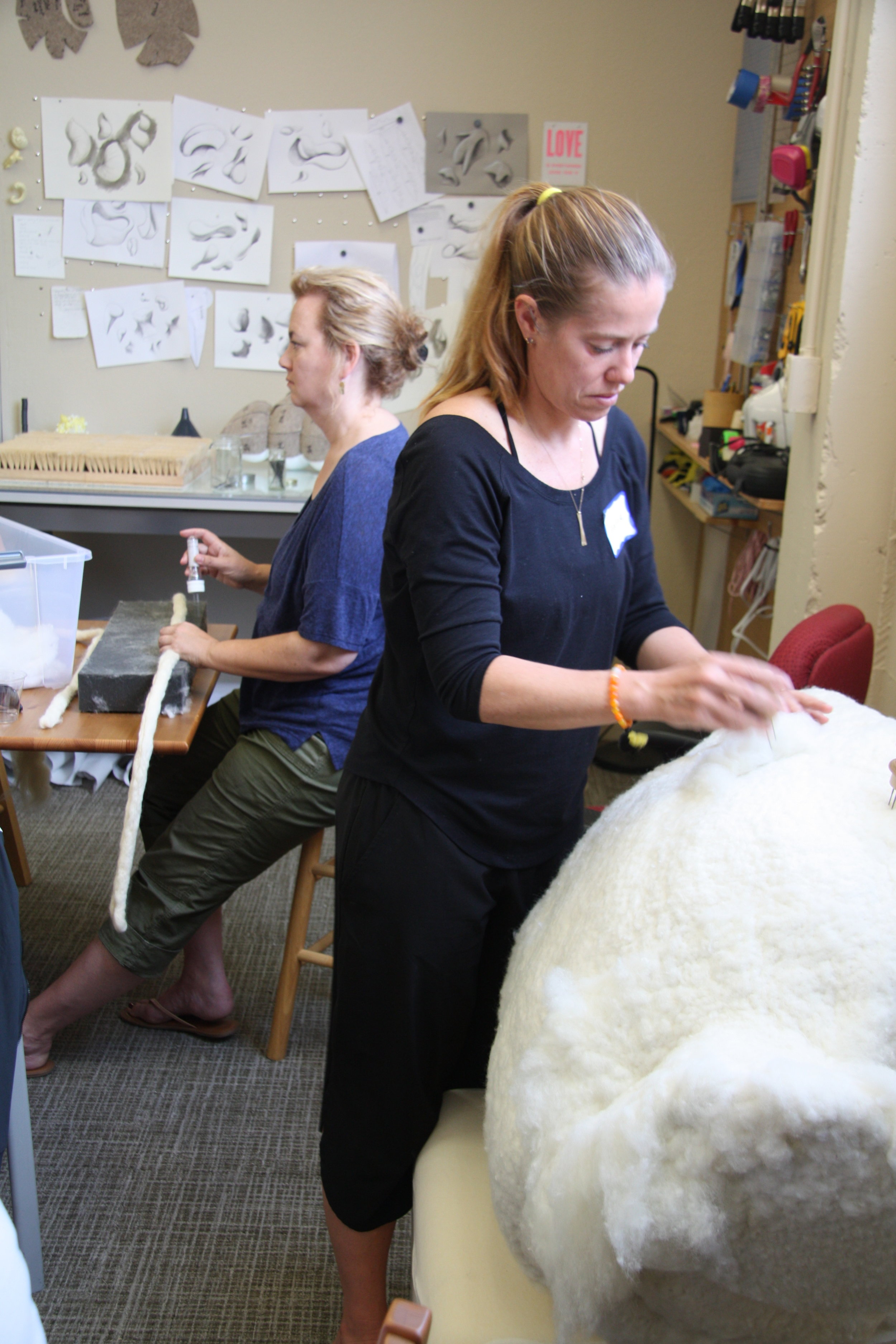Helpers Helping: inviting community volunteers into my art studio to help me make touchable fiber sculpture
As the summer draws to a close I am taking a moment to reflect on the progress of my InTouch project. This summer was a busy one for me that included many successful new ventures: the help of studio assistants, hosting volunteer ‘Felting Parties’, and the receipt of a grant! (more on that in the next post). All three contributed to measurable progress on creating the InTouch project.
First of all, if you’ll remember I began with creating the Hanging Pod forms for one of the two gallery spaces. These abstract organically-inspired forms will be hung from a steel structure in the gallery space, allowing visitors to walk among them and feel their surfaces, textures, weight, and ‘squishiness’. Fabrication of the human-sized pieces is a big undertaking: it includes:
making small models in order to create 2D patterns
laying thin felt over the models to figure out where to demarcate separate pattern pieces
digitally tracing and enlarging the patterns
cutting out the scaled-up patterns in thick felt
hand-stitching the pattern pieces together
inserting a cable anchor and stuffing
covering the industrial felt forms with white wool, and
adding detail and finish through needle felting.
My plan calls for twelve Hanging Pods. Yes, that is a lot of work. Yes, there exist digital programs to create patterns and print them out. No, I do not have the time, funding or desire to sit in front of a computer to learn how to create 3D forms and make their digital patterns-- I learn by hands-on making. I am a sculptor, not a programmer. Moving on.
At the end of May I had five of the Hanging Pods started and partially covered with wool; now, at the end of August, I have eleven of the twelve Hanging Pods stitched, with five of them covered with wool and almost ready for details and another five in the detail finishing phase. In case it doesn’t communicate through my description, that is a FANTASTIC amount of progress. I’m incredibly pleased, and I know that I have a lot of people to thank for that: assistants and volunteers.
Starting in June I hired two studio assistants to help with fabrication: Jordan, a student on summer break from Santa Clara University, was my main full-time helper, and Jessica, a mom from my kids’ school, provided some extra assistance as well. Their tasks included cutting out paper and then thick felt patterns, hand stitching industrial felt pattern pieces together, helping me stuff, wrestle, and sew the forms closed, covering industrial felt with wool, learning and applying some finishing techniques, and managing volunteer events. They also helped me talk through and solve some of the fabrication issues as they arose. Part of the effectiveness of paying people to be in my studio for solid hours every week was that I had to be prepared and use their time and mine efficiently and productively, and commit to a very regular schedule-- which necessitated finding summer camp options for my kids so I could make as much progress as possible. As usual, having outside deadlines always helps me. And having employees helped me even more. As someone who generally prefers to work alone, I had been a little nervous about what it would be like to have someone else in my space all summer… but it proved to be lovely. Jordan and I in particular had a lot of time to talk about life and art, and I think we both enjoyed hearing each others’ perspectives.
Jordan and Jessica helping stuff a stitched sculpture.
Sometimes it takes three to close and stitch a densely packed form.
This summer I also tried out another new approach in the studio: holding ‘Felting Parties’ at which volunteers came to my studio to help physically contribute to the making of the work by covering the stitched industrial felt forms with white wool. I trained volunteers in the techniques of needle felting the various pieces and provided them with information on the visual and physical goals I had in mind for each sculpture. Variations in armature (the underlying forms to coat: either stitched industrial felt stuffed with various lightweight filler, or foam rubber, or styrofoam) affected how one would poke at the wool or use more or fewer felting needles in the tools.
I was unsure how Felting Parties would play out-- quickly training and then arming an unknown quantity of newbies with sharp tools to work on my sculpture? But I needn’t have worried. Just like my workshops, felting parties attracted kindred spirits aplenty: enthusiastic helpers who just clicked with each other and the spirit of connection that characterizes this project. I can’t frankly remember where the idea for Felting Parties came from-- all I know is that this project would be impossible without all that help. Over the summer I held seven felting parties, and hosted a total of 38 individual participants, several of whom were repeat attendees. Some had a bit of experience, a few had a lot, but most were totally new to the process. Some were already friends from various parts of my life, others were relatively new friends, or recent visitors to my Open Studios, or people from my mailing list whom I’d previously never met in person. They were a pleasure to work with, every one. We had fantastic conversations about on a huge range of topics, a lot of laughter, and great results. .

